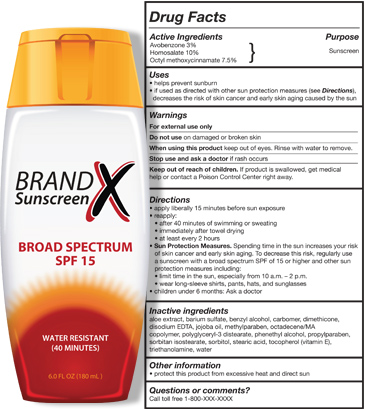Lather Up Your Skin with Improved UVA and UVB Sun Protection
Skin damage from the sun can happen no matter what time of year it is. Whether you are skiing or swimming, one of the most important ways 
It is now easier to protect your skin than ever before. All sunscreen lotion labels will soon get a face lift to make it easier for you to pick the right sunscreen. Next time you shop for a sunscreen, look for the new “broad spectrum” label on the package.
What Does Broad Spectrum Mean?
Broad spectrum means that a product can block UVA and UVB sun rays equally. UVA and UVB rays can cause skin cancer, early skin aging and sunburn. In the past, sunscreens mostly protected your skin from UVB rays that cause sunburns.
Products that are not broad spectrum will have a warning on the label saying they will not protect you against skin cancer and early skin aging. To learn more check out, “How Sunscreen Works.”
How Else are Labels Changing?
Some sunscreens have names that are misleading. Because you have to reapply sunscreen to stay safe, products can no longer say they:
- are water proof
- are sweat proof
- are sunblock
-
offer instant protection.
Image courtesy of US FDA
Water or sweat resistant lotions can keep you safe when you sweat or swim. Labels on these products will now state on the label how long they can protect you before you should reapply. These products will last for either:
- 40 minutes or
- 80 minutes.
Try this tip when you are at the pool! Reapply water resistant sunscreen during every rest break or “adult swim.”
What Product is the Best for Me?
Everyone’s skin can benefit from sunscreen. Sunscreen that does not have a broad spectrum label will NOT protect you from skin cancer and early skin aging. These changes are only for sunscreen lotion and not spray because you put on spray sunscreens differently than lotions. For the best protection, follow these guidelines.
Use at least an SPF 15 up to an SPF 50. SPF stands for Sun Protection Factor or how much sun protection a product offers. The higher the SPF value of the sunscreen, the better protection it will offer. But this is only up to SPF 50. Sunscreens with an SPF greater than 50 still work, but it is unclear if they work any better than SPF 50 lotions.
Use broad spectrum sunscreen with an SPF of 15 or higher. Broad spectrum SPF 15 products can protect your skin against sunburn, skin cancer and early sun aging.
If swimming or sweating, use a water or sweat resistant product. Sunscreen that is not water resistant will have a label telling you to use a water resistant product if you are sweating or swimming, but remember to reapply every 40 or 80 minutes, depending on the directions.
Read the label. All sunscreens must include “drug facts” on the label that tell you:
- what it is made of
- how to apply it
- if it is water resistant
- warnings.
How Do I Get the Most Out of My Sunscreen?
Spending time in the sun puts you at risk for skin damage. Use the following sun protection tips, in addition to slathering on broad spectrum SPF 15 (or higher) sunscreen, to lower your risk of skin cancer, early skin aging, and sunburn!
- Limit your time in the sun.
- Avoid going outside between 10a.m. and 2 p.m.
- Cover up! Wear hats, sunglasses and long sleeves to protect bare skin.
- Reapply sunscreen at least every two hours.
- Be sure to use enough: apply approximately 2 oz. every time (about a shot glass full).
You can also check out for more tips!
Do I have to Throw Away All of my Old Sunscreen?
If you already have sunscreen in your house, it is still safe to use. But, it may not protect you from the UVA rays that cause skin cancer and early skin aging. Sunscreen works well for up to three years. So, if your sunscreen is more than three years old or has been sitting in high temperatures, you may want to throw it out.
Points to Remember
- Limit your time in the sun.
- Check sunscreen labels carefully.
- Select broad spectrum sunscreen with an SPF of 15 or higher.
- Use sweat- or water-resistant sunscreen when your skin will get wet.
- Reapply adequate amounts of sunscreen at least every two hours.
Don’t let the sun stop you from enjoying the outdoors. Lather up at least every two hours with broad spectrum sunscreen and keep your skin healthy!
Hope through Research – You Can Be Part of the Answer!
Many research studies are underway to help us learn about skin aging and protecting your skin from sun damage. Would you like to find out more about being part of this exciting research? Please visit the following links:
For more information:
Go to the Skin Cancer health topic.